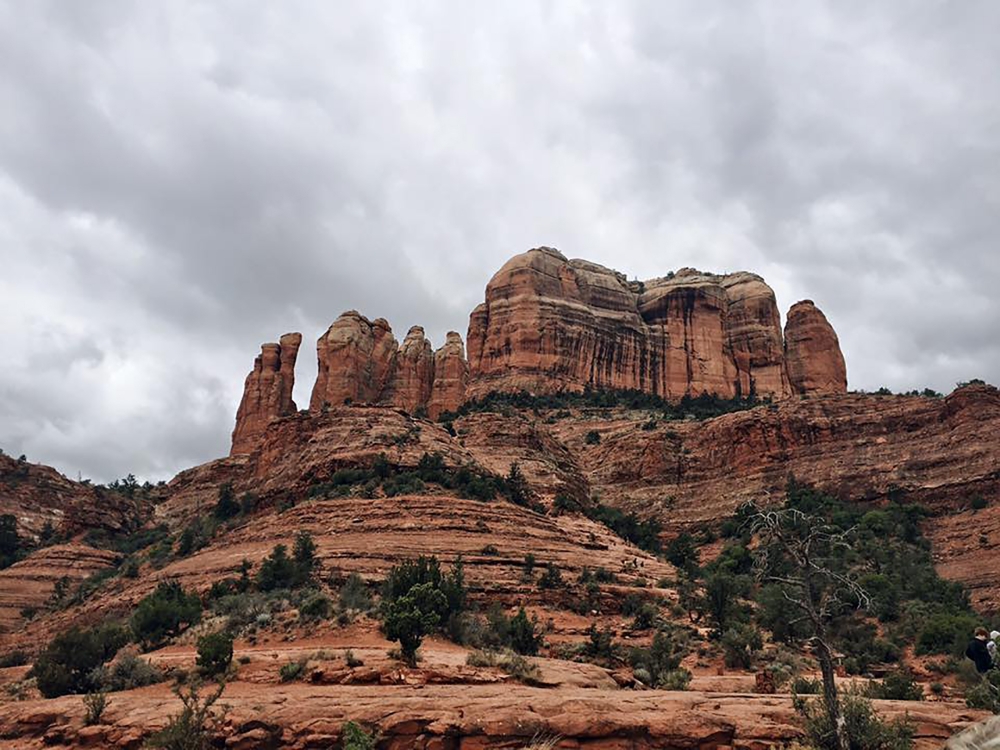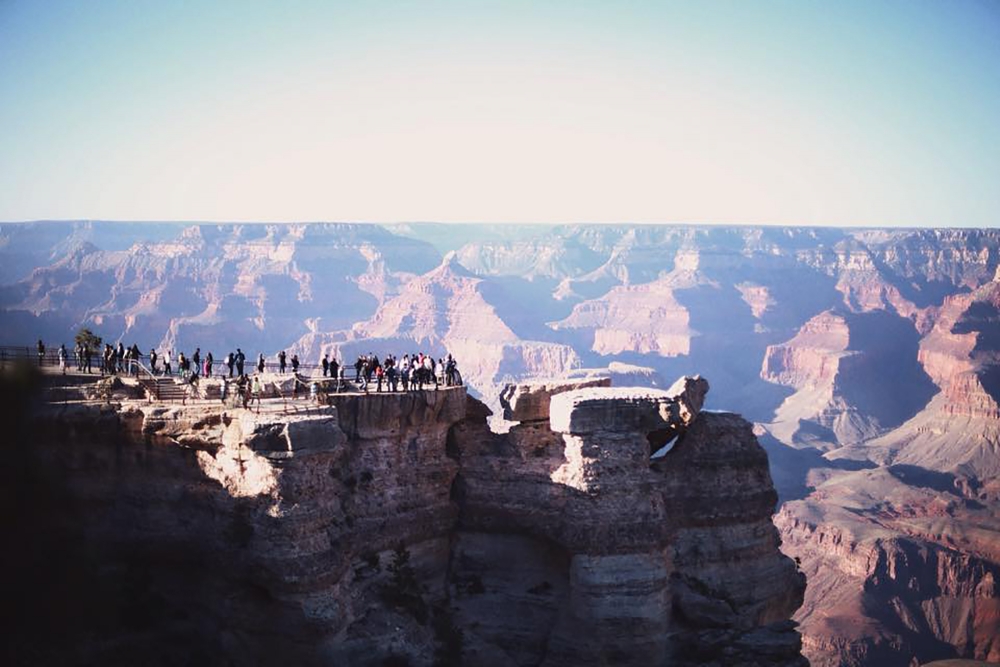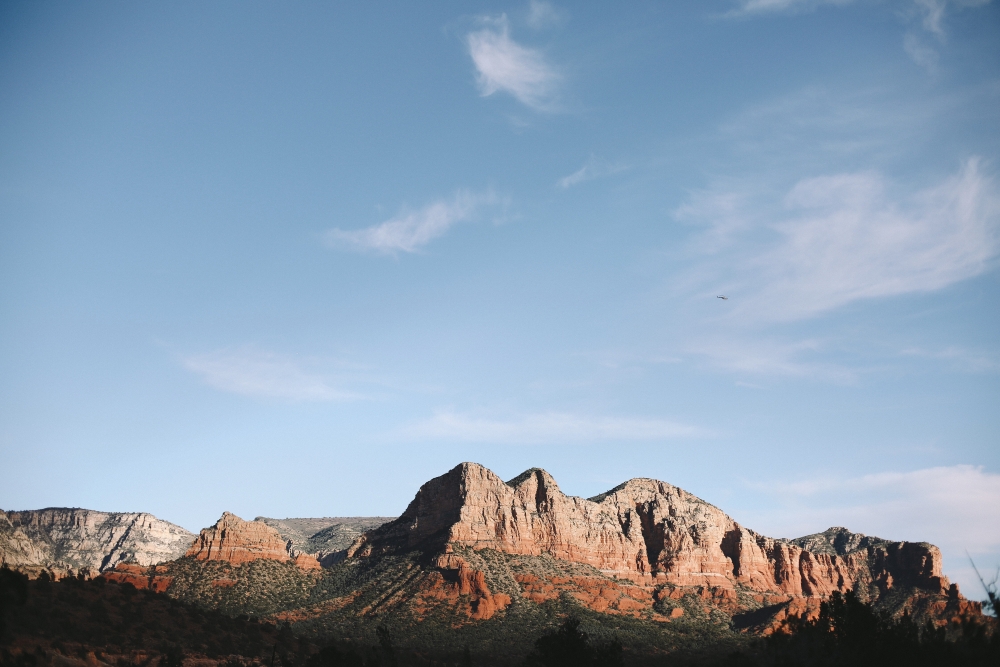Prior to visiting Arizona, three things have most likely crossed your mind at some point: Phoenix, the Grand Canyon and vast desert. While these three things are the most popular due to the state’s stereotypes and reputation, they don’t make up any significant proportion of what the state has to offer.
Despite there being about 48,000 Arizona residents out of the 88,000 students at Arizona State University, it’s not uncommon to meet an Arizonan that hasn’t even been to the Grand Canyon, let alone all the other magnificent state landmarks.
As a non-resident, I sought out the basic tourist attractions as soon as I arrived, but I found that there are actually many hidden gems throughout the state. One club in particular helped me and many others, even locals, uncover these amazing experiences: the Arizona Outdoors Club (AOC).
The club showed me that not only are there amazing places, but there are also many activities that may be untried or unknown to most people as well: rock climbing, bouldering, caving, canyoneering, backpacking, sailing, snowboarding, cross-country skiing and much, much more.
It’s not uncommon to hear older adults say, “Travel while you’re young, before you have all the obligations of a job and/or family.” The next four years will be spent living in Arizona, so what better time to experience the things life (or at least Arizona) has to offer? And not to mention, most of the ASU campuses are located almost directly in the heart of Arizona, making it extremely convenient to do short travels on the weekends.
President of the AOC Ryan Heintzman says, “[Traveling is important because] it gives people perspective. It opens up their idea of the world instead of having this closed viewpoint of what it’s like in their neighborhood. Once you travel and see different places and meet different people, you can see how other people live and interact with each other.”

Cathedral Rock, Sedona/ Photo by: Willow Greene
Route 1- Phoenix to Page
1. Prescott
Mainly known for its historic Whiskey Row and old-west small-town vibe, Prescott is one of the most popular historic towns in Arizona. A street that was once home to over 40 saloons prior to a drastic fire, is now lined with fewer saloons and shops but holds many parades and festivals throughout the year, including car shows.
If not trying to stick to the route, Prescott’s “experimental city” is located just off of I-17. Arcosanti is unique in that it is a city of practice and study in architecture and urban design; plus, it’s eco-friendly. Founder Paolo Soleri views society’s green movement as “wasteful” and calls it “green consumerism.” Because of this, he and a large crew are experimenting ways of a more efficient city design.
2. Camp Verde
Arizona may have as many zoos as it does mountains, but it only has one zoo dedicated strictly to the creatures of Africa. Out of Africa Wildlife Park is home to over 100 species. The zip-line safari - camping in the park and the ability to feed some of the animals including a tiger - is what sets this zoo apart from others that house African animals.
3.Sedona
When asked, “What is your favorite place to visit in Arizona?” the answers tend to vary between the neighboring towns of Sedona and Flagstaff. They may be close in distance, but they are polar opposites in culture. The desolate, dull drive toward Sedona is abruptly interrupted by towering red cliffs. The city’s pop of color isn’t its only asset. The hiking and spirituality in and around the town is memorable.
Downtown Sedona’s shopping scene is a prime example of the city’s spirituality with crystal therapy shops, psychic readings and Native American artifacts. Just a few minutes from the downtown area is Amitabha Stupa, a Buddhist shrine. It’s a place of peace and self-reflection, and it’s a tradition to walk three circles around the statue in prayer for those experiencing misfortune.
Sedona/ Photo by: Willow Greene
Hiking is one of the most, if not the most, popular activities in Sedona. Oak Creek Canyon and Slide Rock State Park, while beautiful, are Sedona’s biggest tourist traps. The AOC’s Membership Director Emily Pawlik suggests hiking the West Rock Trail, which follows a river through the red rock canyons of Sedona.
From Sedona to Flagstaff, there is a beautiful scenic route, 89A, zig-zagging at an incline overlooking Sedona’s canyons and other natural formations. Consider driving through it with the windows rolled down, and be prepared to stop at overlooks.
4. Flagstaff
In comparison with Sedona, Flagstaff is often times referred to as “the Colorado of Arizona.” The downtown shops are almost all outdoor and surrounded by green, forest-infested or white, snow-capped mountains depending on the season. Flagstaff is one of the more famous stops on Route 66 just an hour from the Grand Canyon. Luckily, the city’s history doesn’t make the city feel touristy.
Vice President of the AOC Jared Peabody says, “Flagstaff has a lot more culture than Phoenix. The people are nicer and seem to be happier about life. Just traveling a couple hours away, people live (their) lives completely different than people in Phoenix.”
Flagstaff, home to Snowbowl and Humphreys Peak, is the most popular place in Arizona for winter sports. With its abundance of snowfall and high elevations, it’s a great alternative to another heated weekend in the Phoenix area. And after a long day of frolicking in the snow, or a weekend of camping in the woods, stop by SoSoBa in downtown for a large warm bowl of authentic ramen noodles.

The Grand Canyon/ Photo by: Willow Greene
6. Page
Page is probably one of the most exciting cities in Arizona in terms of outdoor activities. Home to Lake Powell, Vermilion Cliffs National Park, Antelope Canyon National Park and Horseshoe Bend Overlook - as well as being conveniently located near Utah’s Zion and Bryce Canyon National Parks - there is no shortage of activities in Northern Arizona.
The Vermilion Cliffs are almost inaccessible, unless by four-wheel-drive vehicles, but are worth the visit. A variety of astonishing canyons and cliffs are scattered throughout the park’s 280,000 acres. Most visitors, if hiking, turn this into an overnight trip because there is so much to experience, and not to mention, hiking requires a permit.
Antelope Canyon National Park is another mysterious scenic experience, but because it’s so popular, it’s recommended to go to its twin, Canyon X, for a less crowded experience. Both canyons are lined with red and orange walls making a zig-zag effect. Light beams shoot through the canyon’s slots creating a hazy, mystical effect throughout the hike.
Despite the number of times one may see the same structured picture of the popular Horseshoe Bend Overlook, those pictures don’t do justice for the actual experience of sitting atop the Colorado River. It’s a quick stop of fresh air, a nice breeze and a great view.
Route 2- Phoenix to The White Mountains
1. Payson
Located just a little over an hour from Tempe, Payson is Phoenix’s city escape while still enjoying those desert feels that northern Arizona lacks. The drive in on U.S. Highway 87 has the beautiful scenery of a dense forest of cacti.
Home to Tonto Natural Bridge State Park - the largest natural travertine bridge in the world - Payson began making a name for itself in 1877. The natural bridge can be viewed from above or hiked down into, where visitors can enjoy a creek and seasonal waterfall. If that sounds like it could get too touristy, take a trip over to Water Wheel Falls at Ellison Creek to enjoy another aquatic outdoor experience.
Afterward, stop by Alfonso’s Mexican Food to feast on a breakfast burrito the size of a forearm.
Snowbowl, Arizona in fall/ Photo by: Willow Greene
2. Strawberry
While there’s not much in this city - the population is just over 1,000 people - it is home to a well-known waterfall hike: Fossil Creek. By taking the 4-mile hike on Waterfall Trail, hikers will walk right into the base of a turquoise waterfall and pool where they can enjoy the year-round 70-degree temperature waters. If four miles seems long in the Arizona heat, just think about the cooling reward of nature’s beauty at the halfway point.
3. Meteor Crater
Fifty-thousand years ago, an asteroid crashed into the Earth right in Arizona. For $18, the monument has trails that will take visitors down 500-feet into the crater to get a feel of just how giant the asteroid was.
4. Holbrook
Mainly known for its Wigwam Motel, Holbrook is one of Route 66’s most famous stops. Since the fallout of this All-American road trip - Route 66 - the town has noticeably began deteriorating with no signs of repairments. While that may seem like a bad thing, the city remains true to its historic culture. The town is decorated with old-fashion cars, dinosaur structures and other miscellaneous figures. For some, this is fascinating. For others, it leaves the question of who else slept in this bed before me?
5. Painted Desert
A fascinating scenery, the Painted Desert is just that: desert naturally painted the colors of a sunrise. From red and yellow to purple and grey, the desert is a road tripper’s paradise with no entrance fee and no necessary stops as it runs along Interstate 40.
6. Petrified Forest National Park
Dinosaurs, dense forests and volcanoes used to make up the area where this park is located. That was until the volcanoes erupted, killing the dinosaurs and moving the trees like a river. After millions of years, these trees now have a “petrified,” or concrete-like, look and feel to them. But this park is much more than fallen trees; it is a burial ground for fossils of plants and reptiles as well as evidence of ancient native life.
7. White Mountains
The White Mountains offer a completely different experience than any other place in Arizona. While Flagstaff and other northern Arizona cities may be dense with forestry, the White Mountains are unique. It can be compared to northern states such as Wyoming and Montana, but even more so, it can be compared to a scene from Canada. There’s even a part of the mountains called Alpine Arizona because of its similarities to the Swiss scenery. Flowing streams, lakes, meadows and unfamiliar trees populate the mountains. Popular activities include fishing, camping, hiking and winter sports.
Oak Creek, Arizona/ Photo by: Willow Greene
Route 3- Phoenix to Chiricahua National Monument
1. Picacho Peak State Park
Picacho Peak State Park is one of the few stops from Phoenix to Tucson, and for those who can’t sit still for too long, it is much needed. The park’s Hunter Trail was voted the best winter hike by the Phoenix New Times in 2012. The four-mile round-trip trail is lined on both sides with cords that help people who are struggling, feel unsafe or just need that extra help as motivation to get up the steep mountainside.
2. Tucson
Despite it being home to the Sun Devils’ biggest rival, Tucson has plenty to offer to travelers. Being so close to Mexico, the city is rich with Mexican culture; Mexican restaurants, museums and art can be found anywhere throughout the city, as well as St. Augustine Cathedral and Mission San Xavier del Bac.
It’s true that Tucson isn’t the prettiest or cleanest of Arizona’s cities. Perhaps because of this, most travelers and locals seek out Tucson’s great escape: Mt. Lemmon. The mountain that overlooks all of Tucson has many short hikes and plenty of places to camp, but even for non-hikers, the scenic winding drive reaching to the top of the mountain is the perfect breath of fresh air.
After a much needed hike or drive, stop at Eegee’s for a refreshing slushie - so good it can be found in the tailgating parking lots at Arizona State University.
3. Bisbee
Being so close to the border, one wouldn’t expect the atmosphere of this old mining town. Its ideal location amongst rolling hills gives it a secluded, small-town feel, and the people are very unique. They are the type of people you might find in Austin, Texas, or Portland, Oregon. They even have a Mexican-inspired vegan restaurant called Poco, many bed and breakfasts, and mainly antique and thrift shops - keeping the vintage style.
Snowbowl, Arizona in summer/ Photo by: Willow Greene
4. Chiricahua National Monument
Described as a “Wonderland of Rocks” by the National Park Service, this monument offers an eight-mile scenic drive and a variety of easy to difficult hiking trails. While the hikes are great for getting outdoors, the drive offers a 360-degree overlook of unique rock formations: pinnacles, balanced rocks, spires and columns.
Route 4- Phoenix to Las Vegas
1. Havasu City
Other than the obvious aquatic activities that come with being by a lake, Lake Havasu City’s world famous London Bridge and scenic Parker Dam Road are major attractions. The London Bridge (“is falling down”) is a bridge that connects the Lake Havasu shore to an island in the Colorado River.
Parker Dam Road is an 11-mile backcountry road that passes along the Colorado River and onto the California shore of Lake Havasu. This byway offers a variety of activities from picnicking, camping, fishing, swimming, hiking and much more.
2. Ringbolt Hot Springs
Located just 40 miles from the Las Vegas Strip, the Ringbolt Hot Springs is a refreshing break either from driving or from a long weekend of Vegas bucket lists. Once at the trailhead, it’s a moderate, 3-mile hike through a winding canyon that eventually dumps its travelers off at the Colorado River--the perfect stop for a cool down, offering great cliff jumping, easy beach access and beautiful scenery. The next half mile is mostly uphill, so it’s not a stop to pass up.
Since the hot springs are located high up on a platform, there’s a rather tall ladder that can be skeptical. Putting aside any fear of heights is essential to experience nature’s pleasant spas. There are multiple pools, each gradually increasing in temperature. Warning: some people do skinny dip, and there is a rare, life-threatening algae in the water, so it’s advised to keep your head above water.
Avoid fighting time by backpacking down to the hot springs and setting up camp by the Colorado River.








